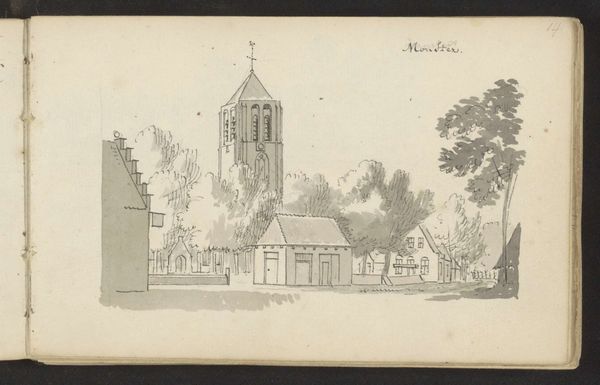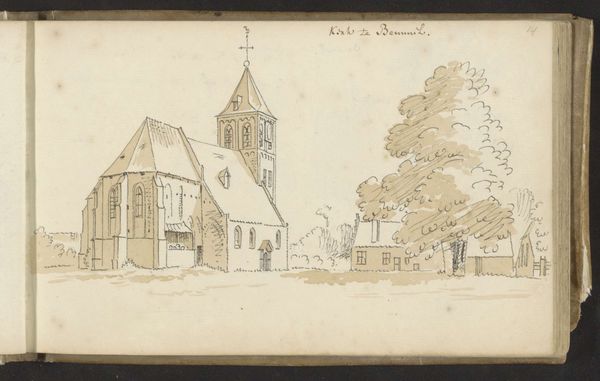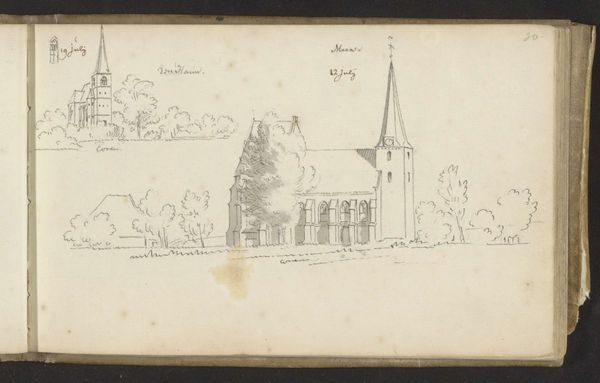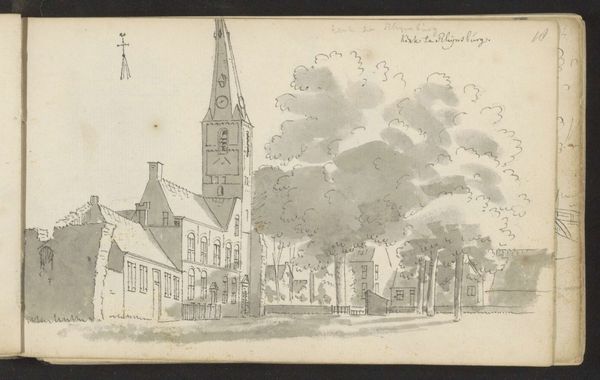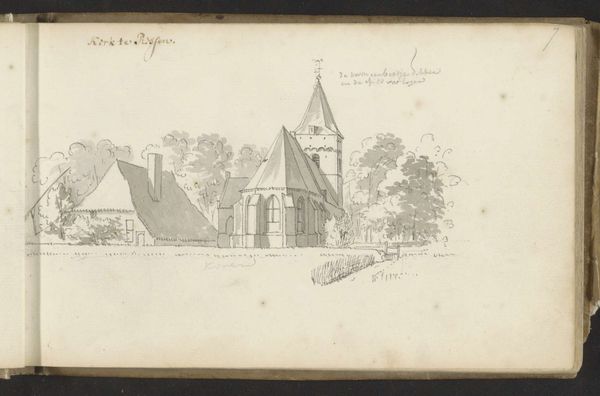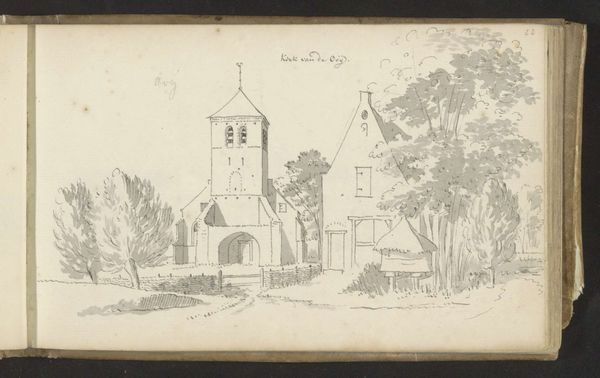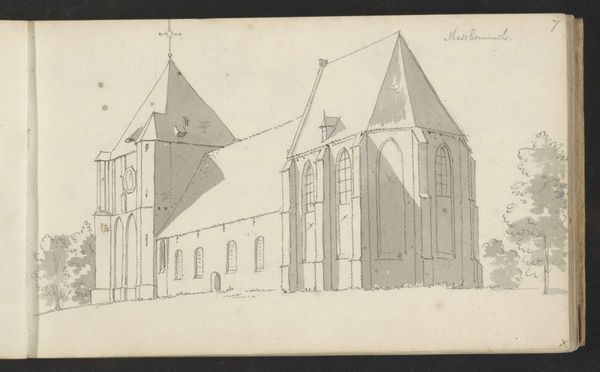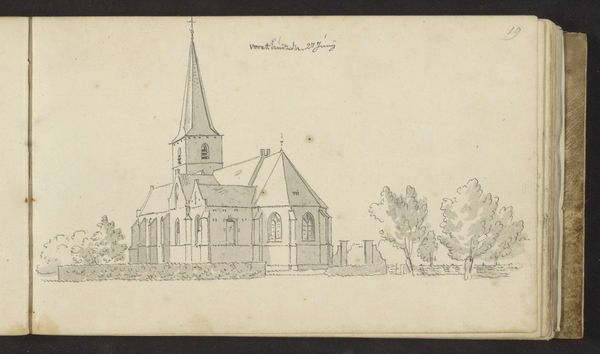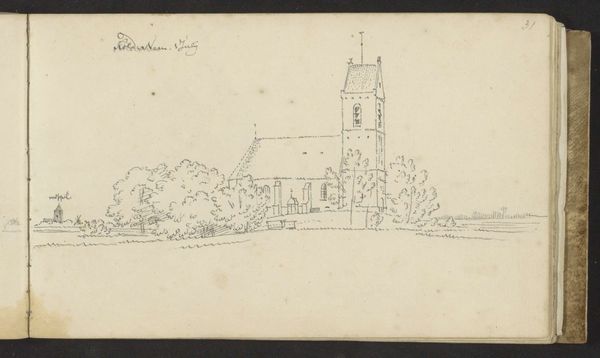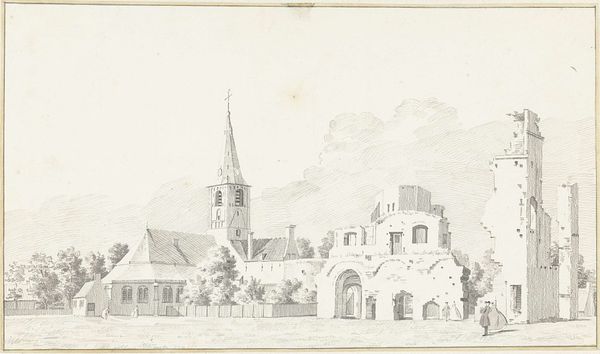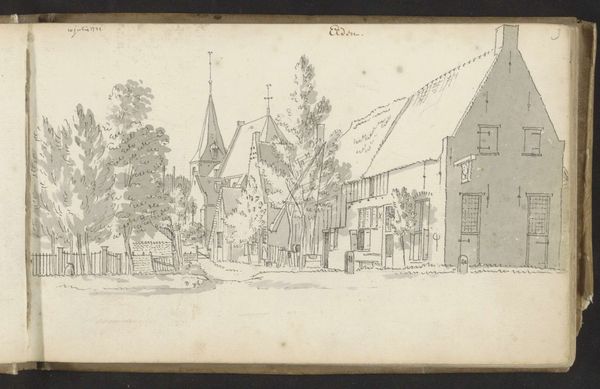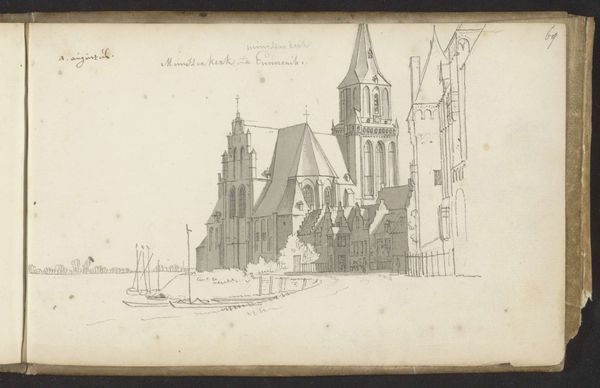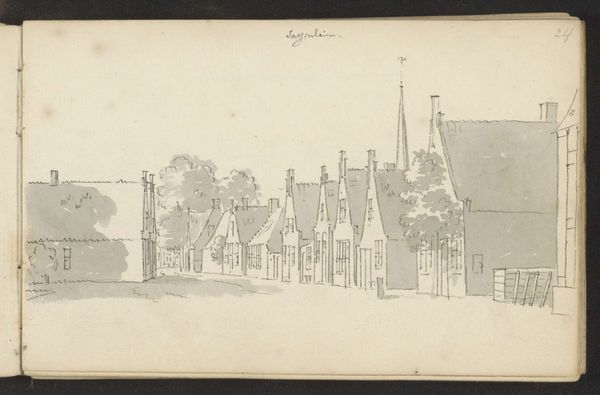
drawing, paper, ink, pencil
#
drawing
#
aged paper
#
dutch-golden-age
#
mechanical pen drawing
#
sketch book
#
landscape
#
paper
#
form
#
personal sketchbook
#
ink
#
sketchwork
#
pen-ink sketch
#
pencil
#
line
#
pen work
#
sketchbook drawing
#
cityscape
#
storyboard and sketchbook work
#
sketchbook art
#
realism
Copyright: Rijks Museum: Open Domain
Curator: Welcome! Let's explore "Kerk te Valkenburg," a pen, pencil, and ink drawing on paper created by Abraham de Haen the Younger in 1731. It's currently held in the Rijksmuseum. The aged paper lends a delicate air. Editor: The initial impression is striking—the high contrast rendering of this austere yet somewhat looming church dominates the frame with what reads as very careful technical lines against almost dreamy, floating blobs that attempt to suggest treetops or heavy, moisture-filled air. Curator: Precisely! The artist's skillful application of line in this urban landscape drawing creates form through the geometry and verticality of the church architecture, and by implication, calls into play semiotic readings of sacred spaces. We see clearly defined lines depicting architectural features and contrasts in texture on the facade itself. Editor: That may be true, but it's more compelling to interpret the image considering what was actually represented: the cultural function of the church and the role that such institutions often had in enabling socio-economic and power disparities during the Golden Age. Even the towering quality has, for me, associations with dominance and control, and I believe such images promoted power structures. Curator: I disagree. The artist may be merely exploring form. What appears at first glance is the meticulous, precise structure of the church rendered with line work, almost an exercise in capturing geometry, light, and shadow. Editor: Perhaps. But let us consider how this image may have played a role in shaping public perceptions or documenting social life? Who has access, historically and even today, to such architectural icons or the power and agency associated with place, and how do historical visual forms condition these encounters? Curator: I can see how the setting provides context, especially noting the tiny figures dwarfed by the architectural constructs; that's a key point about the picture plane and spatial relations in the work overall. Thank you for raising such salient factors in interpreting "Kerk te Valkenburg." Editor: Indeed. Considering socio-cultural contexts encourages a fuller understanding of historical as well as formal dialogues inherent within such artifacts.
Comments
No comments
Be the first to comment and join the conversation on the ultimate creative platform.
